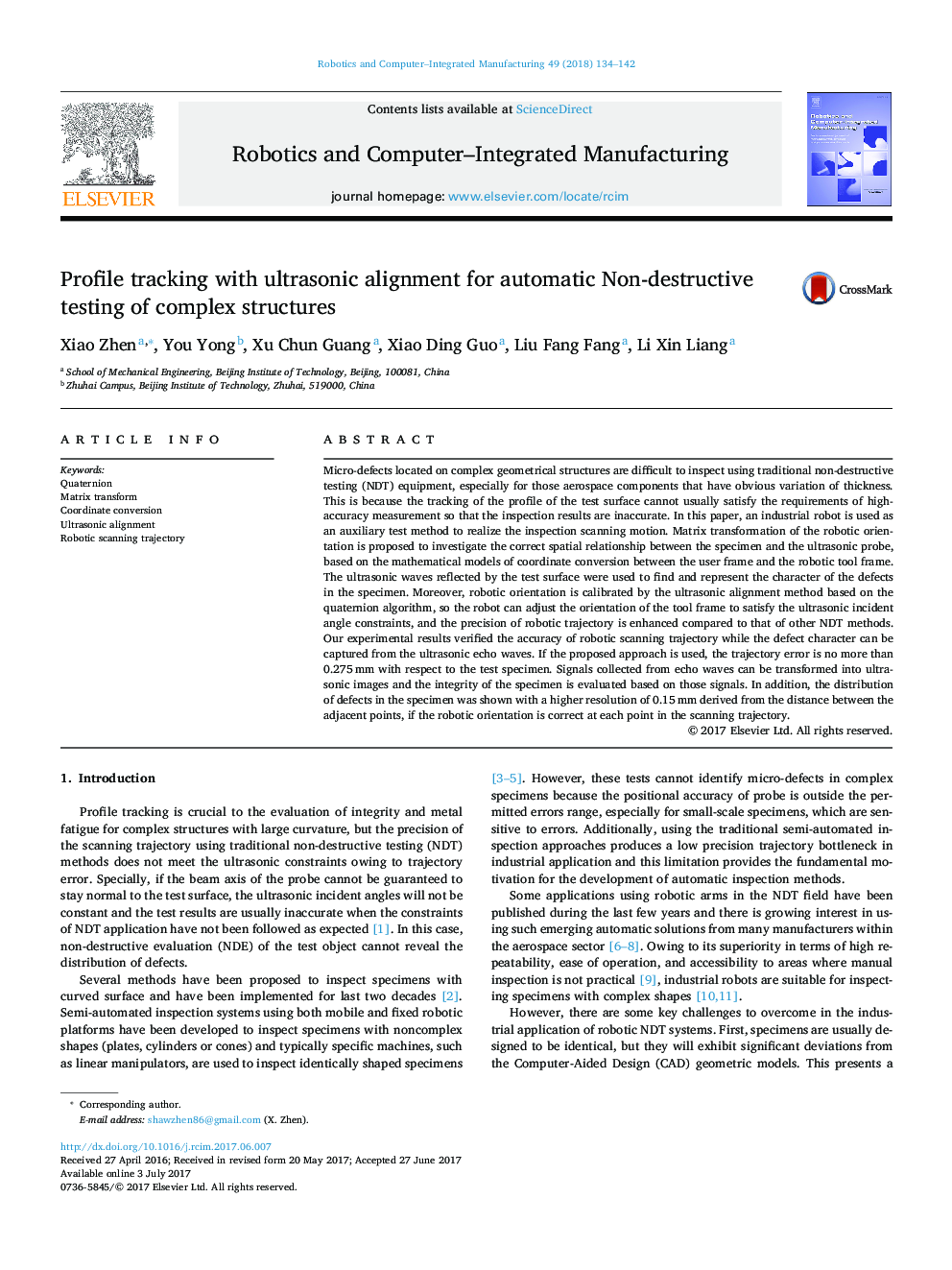| کد مقاله | کد نشریه | سال انتشار | مقاله انگلیسی | نسخه تمام متن |
|---|---|---|---|---|
| 4948937 | 1439928 | 2018 | 9 صفحه PDF | دانلود رایگان |
- We present a new calibration approach that combines robotic scanning orientation and ultrasonic alignment.
- Mathematical model of coordinate conversion between robotic tool frame and probe was proposed when the calibration coefficients were taken into consideration.
- Specimen was graspped by the robot and suitable for adjusting based on the feedback ultrasonic signals.
- Based on the quaternion algorithm the test result described as an ultrasonic C-scan image.
- The presented ultrasonic alignment approach enhancing the precision of robotic trajectory and stabilize ultrasonic echo waves in time-domain.
Micro-defects located on complex geometrical structures are difficult to inspect using traditional non-destructive testing (NDT) equipment, especially for those aerospace components that have obvious variation of thickness. This is because the tracking of the profile of the test surface cannot usually satisfy the requirements of high-accuracy measurement so that the inspection results are inaccurate. In this paper, an industrial robot is used as an auxiliary test method to realize the inspection scanning motion. Matrix transformation of the robotic orientation is proposed to investigate the correct spatial relationship between the specimen and the ultrasonic probe, based on the mathematical models of coordinate conversion between the user frame and the robotic tool frame. The ultrasonic waves reflected by the test surface were used to find and represent the character of the defects in the specimen. Moreover, robotic orientation is calibrated by the ultrasonic alignment method based on the quaternion algorithm, so the robot can adjust the orientation of the tool frame to satisfy the ultrasonic incident angle constraints, and the precision of robotic trajectory is enhanced compared to that of other NDT methods. Our experimental results verified the accuracy of robotic scanning trajectory while the defect character can be captured from the ultrasonic echo waves. If the proposed approach is used, the trajectory error is no more than 0.275â¯mm with respect to the test specimen. Signals collected from echo waves can be transformed into ultrasonic images and the integrity of the specimen is evaluated based on those signals. In addition, the distribution of defects in the specimen was shown with a higher resolution of 0.15â¯mm derived from the distance between the adjacent points, if the robotic orientation is correct at each point in the scanning trajectory.
Journal: Robotics and Computer-Integrated Manufacturing - Volume 49, February 2018, Pages 134-142
